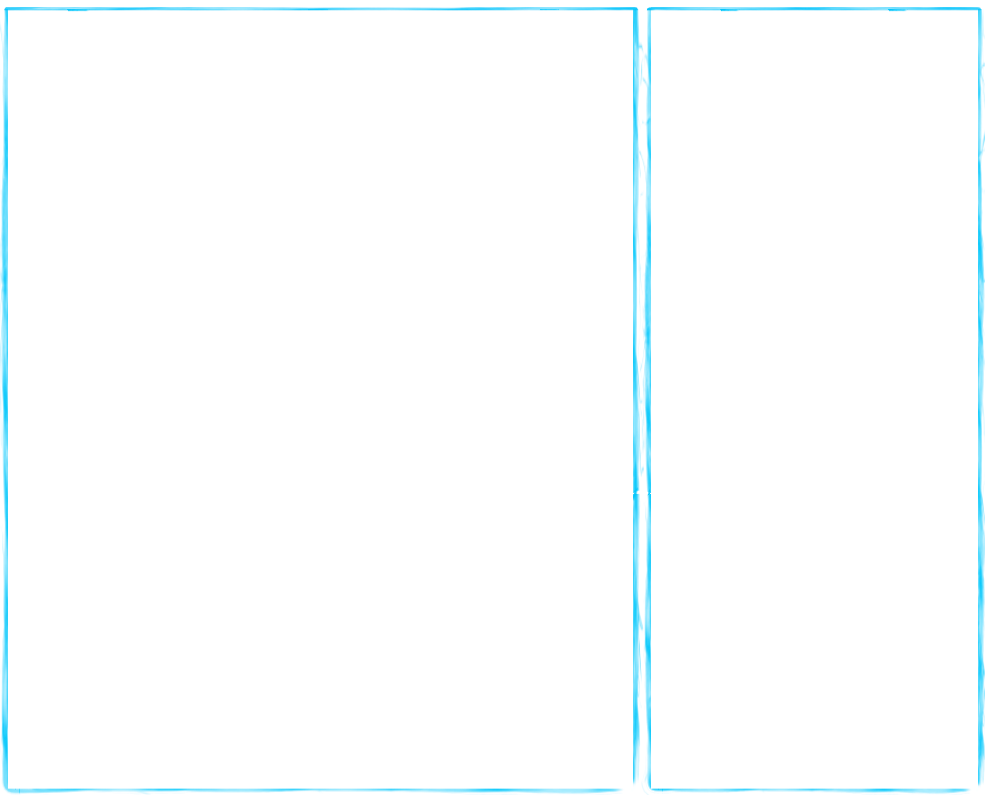

All Math Content
Similar Content
Comparing & Ordering Decimals Lesson
Decimal-Fraction Conversions Lesson
Simplifying Fractions Lesson
Adding/Subtracting Like Fractions
Comparing & Ordering Decimals Quiz
Decimal-Fraction Conversions Quiz
Vocabulary mouseover for definition
Decimal
Another way to express a fractional part using powers of ten Decimal Places
Digits to the right of the decimal point Decimal Point
Symbol that separates the whole number from the fractional part Tenths
The first place right of the decimal point Hundredths
The second place right of the decimal point Thousandths
The third place right of the decimal point <
Less than >
Greater than =
Equal to Terminating Decimal
a decimal value that ends or terminates
example: 0.5, 3.44, 0.78 Repeating Decimal
a decimal value that repeats and continues on to infinity
example:
0.33 = 0.333333 continues on
0.4747=0.47474747 continues on Equivalent Fractions
Value of the fractions are the same Numerator
Top number in a fraction Denominator
Bottom number in a fraction Common Denominator
Denominators that are the same number Uncommon Denominator
Denominators that are not the same number Simplify Change fraction to its lowest terms Greatest Common Factor
The largest number that will divide into 2 or more numbers evenly Least Common Multiple
The smallest number that 2 or more numbers can be divided into evenly Convert
To change Improper Fraction
a fraction where the numerator is greater than the denominator Proper Fraction
a fraction where the numerator is less than the denominator Mixed Number
contains an integer, generally a whole number and a fractional part The Big One
The Big One: a fraction = to one whole, where the numerator and denominator are the same. Ex: 4/4, 5/5, 8/8.
Similar Content
Comparing & Ordering Decimals Lesson
Decimal-Fraction Conversions Lesson
Simplifying Fractions Lesson
Adding/Subtracting Like Fractions
Comparing & Ordering Decimals Quiz
Decimal-Fraction Conversions Quiz
Vocabulary mouseover for definition
Decimal
Another way to express a fractional part using powers of ten Decimal Places
Digits to the right of the decimal point Decimal Point
Symbol that separates the whole number from the fractional part Tenths
The first place right of the decimal point Hundredths
The second place right of the decimal point Thousandths
The third place right of the decimal point <
Less than >
Greater than =
Equal to Terminating Decimal
a decimal value that ends or terminates
example: 0.5, 3.44, 0.78 Repeating Decimal
a decimal value that repeats and continues on to infinity
example:
0.33 = 0.333333 continues on
0.4747=0.47474747 continues on Equivalent Fractions
Value of the fractions are the same Numerator
Top number in a fraction Denominator
Bottom number in a fraction Common Denominator
Denominators that are the same number Uncommon Denominator
Denominators that are not the same number Simplify Change fraction to its lowest terms Greatest Common Factor
The largest number that will divide into 2 or more numbers evenly Least Common Multiple
The smallest number that 2 or more numbers can be divided into evenly Convert
To change Improper Fraction
a fraction where the numerator is greater than the denominator Proper Fraction
a fraction where the numerator is less than the denominator Mixed Number
contains an integer, generally a whole number and a fractional part The Big One
The Big One: a fraction = to one whole, where the numerator and denominator are the same. Ex: 4/4, 5/5, 8/8.
DECIMAL-FRACTION CONVERSIONS
Steps For Converting Decimals to Fractions1. Write the fraction of the decimal how it is read.
2. Simplify the fraction to lowest terms using the GCF.
Example #1:
Convert 0.55 to a fraction
0.55 is read 55 hundredths
Write it!
55/100
Divide the numerator and denominator by the greatest common factor.
GCF = 5
55 divided by 5 = 11
100 divided by 5 = 20
Answer: 11/20
Example #2:
Convert 0.24 to a fraction
0.24 is read 24 hundredths
Write it:
24/100
Divide by the gcf.
The gcf is 4.
24 divided by 4 = 6
100 divided by 4 = 25
Answer: 6/25
Try these:
1) 0.3
Mouseover HERE to see answer.
answer: 3/10
2) 0.45
Mouseover HERE to see answer.
answer: 45/100 = 9/20
3) 1.75
Mouseover HERE to see answer.
answer: 1 75/100 = 1 3/4
4) 0.125
Mouseover HERE to see answer.
answer: 125/1000 = 1/8 Steps For Converting Fractions to Decimals:
* Divide the numerator of the fraction by the denominator.
* If it doesn’t divide evenly, add a decimal point and a zero to
*the number inside the division bracket and a decimal point
*on top of the division bracket.
*Now divide.
*Keep dividing until you get zero as a remainder
or until the answer repeats several times.
OR
You can also change a fraction into its decimal equivalent by rewriting it as a fraction with a denominator of 10, 100, or 1,000 and so on.
Then write the decimal like the fraction is read.
*Convert 4/5 to a decimal.
*Divide numerator by denominator
*4 divided by 5
(notice a decimal point and a zero placeholder were added).
OR
4/5 = 8/10 and multiply the numerator and denominator by 2.
The denominator is now tenths.
The decimal is 0.8 (8 tenths) 4/5 =
8/10
Try these:1) 7/8
Mouseover HERE to see answer.
answer: 0.875
2) 13/50
Mouseover HERE to see answer.
answer: 0.26
3) 7/20
Mouseover HERE to see answer.
answer: 0.35
4) 2/5
Mouseover HERE to see answer.
answer: 0.4
5) 9/10
Mouseover HERE to see answer.
answer: 0.9